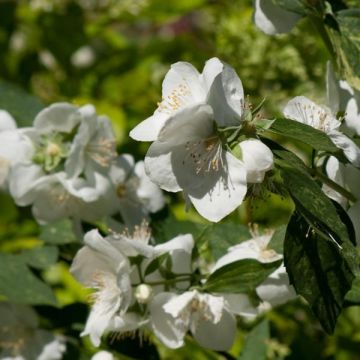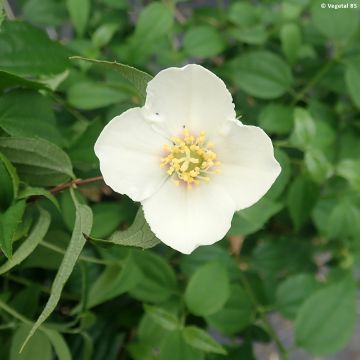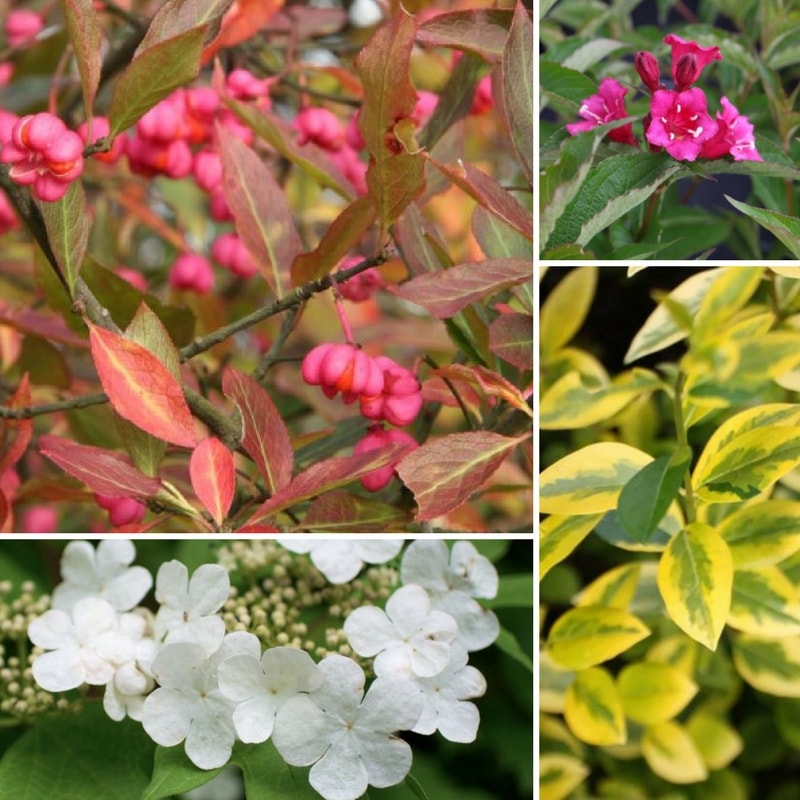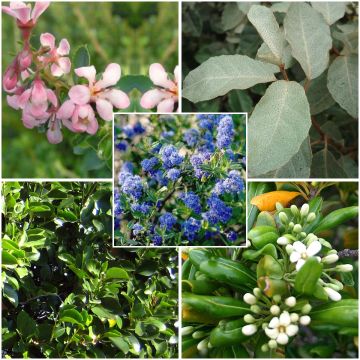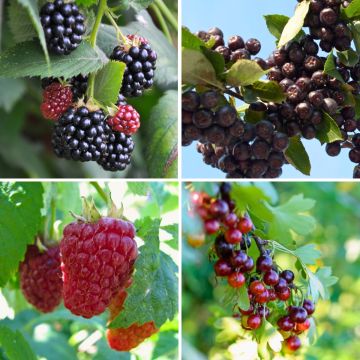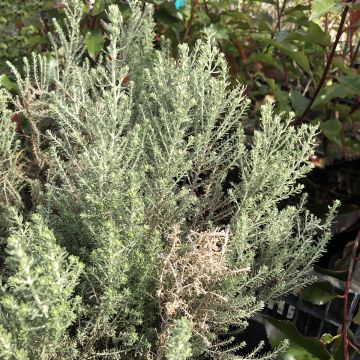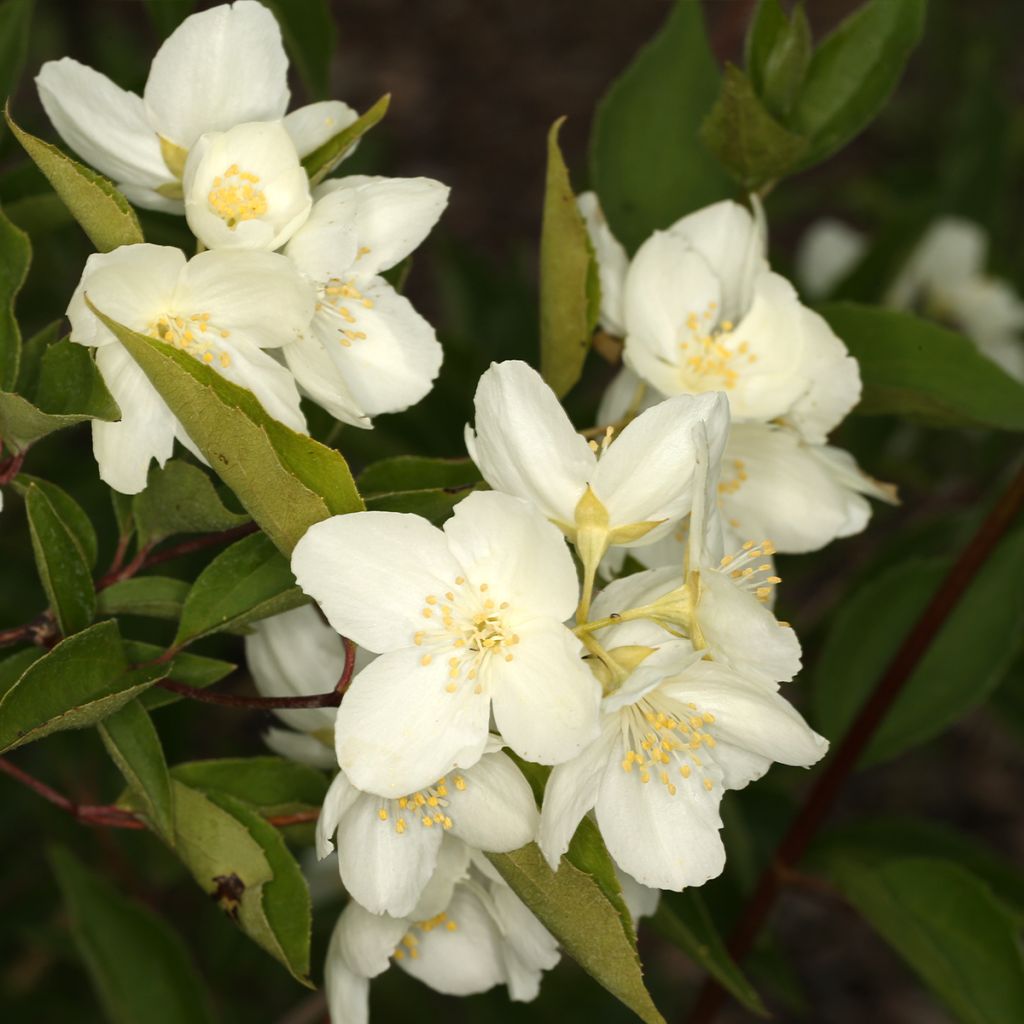

Philadelphus pekinensis - Mock Orange
Philadelphus pekinensis - Mock Orange
Philadelphus pekinensis
Mock Orange
Special offer!
Receive a €20 voucher for any order over €90 (excluding delivery costs, credit notes, and plastic-free options)!
1- Add your favorite plants to your cart.
2- Once you have reached €90, confirm your order (you can even choose the delivery date!).
3- As soon as your order is shipped, you will receive an email containing your voucher code, valid for 3 months (90 days).
Your voucher is unique and can only be used once, for any order with a minimum value of €20, excluding delivery costs.
Can be combined with other current offers, non-divisible and non-refundable.
Why not try an alternative variety in stock?
View all →This plant carries a 24 months recovery warranty
More information
We guarantee the quality of our plants for a full growing cycle, and will replace at our expense any plant that fails to recover under normal climatic and planting conditions.
Does this plant fit my garden?
Set up your Plantfit profile →
Description
The Philadelphus pekinensis, also known as the Beijing Mock Orange, is a botanical species native to northern China and Korea, still uncommon in gardens. It is a deciduous bush that is characterised by an abundant lightly scented spring flowering, made up of small flowers that are not quite white gathered in clusters. Like other mock oranges, this hardy and undemanding plant has its place in a low-maintenance hedge.
The Philadelphus pekinensis belongs to the Hydrangeaceae family, just like hydrangeas. It is a plant found in the northern and western Chinese provinces (Hubei, Jiangsu, Liaoning, Shaanxi, Shanxi, Zhejiang) and in Korea. The bush grows in mixed forests (mixing evergreen and deciduous trees), thickets, and on mountain slopes between 700 and 900 m altitude. It is a bushy and spreading shrub that develops numerous stems from its stump. It grows at a moderate pace and will reach a height of 1 to 2 m at maturity, sometimes more depending on the growing conditions. Its base widens over time, so that eventually its vegetation will be almost as wide as it is tall. Its hollow stems are filled with pith and covered with brown bark, while the young ones are brownish-yellow in colour. They bear a foliage of matte green that turns yellow in autumn before falling. The leaves are entire, with a toothed margin, strongly veined, broadly elliptical or lanceolate, measuring from 4 to 9 cm long and 1 to 4.5 cm wide on non-flowering branches. On flowering shoots, they are smaller. Both sides of the leaves are glabrous, and they are attached to the stems by violet petioles.
The flowering of Philadelphus pekinensis is nectariferous, and it takes place in May-June, depending on the climate. The numerous flowers are grouped in clusters of five to nine at the end of the branches. They are 3 to 4 cm wide, composed of 4 rounded petals and a creamy yellowish-white colour arranged in a cup around a core of yellow stamens. Their scent is moderately pronounced, releasing aromas of orange blossom and jasmine that attract pollinating insects.
The Beijing Mock Orange thrives almost anywhere, even flowers in light shade, and can tolerate competition from other shrubs and large trees: it is an easy-to-grow garden plant in ordinary soil (even limestone) and in most of our climates. It can survive in dry soil during the summer but will be more comfortable in soil that retains moisture. It finds its place in a countryside hedge, alongside the Exochorda (E. serratifolia or korolkowii in limestone soil), hedge viburnums, or botanical roses, for example. Since it becomes less prominent after flowering, it is preferable to choose companions with staggered flowering or decorative foliage, both deciduous and evergreen (Osmanthus 'Heaven Scent', Garrya elliptica, Styrax, etc.). Place it in a sheltered position, along a pathway or opening (door, window), to enjoy its fragrance.
Plant habit
Flowering
Foliage
Botanical data
Philadelphus
pekinensis
Hydrangeaceae
Mock Orange
China
Other Philadelphus - Mock Orange
View all →Planting and care
Planting of Philadelphus pekinensis is done from October to February-March. This bush is not demanding in terms of soil, which can be slightly acidic, neutral, or even slightly limestone. Avoid very clayey, heavy soils that are waterlogged in winter and very hard in summer. Once established, it generally does not require watering in summer. Choose a sunny exposure in cooler areas, but partial shade if summers are hot and dry in your region.
Pruning is done after flowering, it is necessary to prune the branches that have flowered above the lower branching. A more severe pruning can be done every 2 to 3 years, in order to keep it compact and very floriferous. Simply do not hesitate to cut the old wood and too long branches down to the base of the plant to encourage branching from the base. Resistant shrub, it can however be subject to powdery mildew and black aphids. Sensitive to phytophthora, this bush does not tolerate a soil that is both hot and permanently damp.
Planting period
Intended location
Care
Planting & care advice
This item has not been reviewed yet - be the first to leave a review about it.
Similar products
Haven't found what you were looking for?
Hardiness is the lowest winter temperature a plant can endure without suffering serious damage or even dying. However, hardiness is affected by location (a sheltered area, such as a patio), protection (winter cover) and soil type (hardiness is improved by well-drained soil).

Photo Sharing Terms & Conditions
In order to encourage gardeners to interact and share their experiences, Promesse de fleurs offers various media enabling content to be uploaded onto its Site - in particular via the ‘Photo sharing’ module.
The User agrees to refrain from:
- Posting any content that is illegal, prejudicial, insulting, racist, inciteful to hatred, revisionist, contrary to public decency, that infringes on privacy or on the privacy rights of third parties, in particular the publicity rights of persons and goods, intellectual property rights, or the right to privacy.
- Submitting content on behalf of a third party;
- Impersonate the identity of a third party and/or publish any personal information about a third party;
In general, the User undertakes to refrain from any unethical behaviour.
All Content (in particular text, comments, files, images, photos, videos, creative works, etc.), which may be subject to property or intellectual property rights, image or other private rights, shall remain the property of the User, subject to the limited rights granted by the terms of the licence granted by Promesse de fleurs as stated below. Users are at liberty to publish or not to publish such Content on the Site, notably via the ‘Photo Sharing’ facility, and accept that this Content shall be made public and freely accessible, notably on the Internet.
Users further acknowledge, undertake to have ,and guarantee that they hold all necessary rights and permissions to publish such material on the Site, in particular with regard to the legislation in force pertaining to any privacy, property, intellectual property, image, or contractual rights, or rights of any other nature. By publishing such Content on the Site, Users acknowledge accepting full liability as publishers of the Content within the meaning of the law, and grant Promesse de fleurs, free of charge, an inclusive, worldwide licence for the said Content for the entire duration of its publication, including all reproduction, representation, up/downloading, displaying, performing, transmission, and storage rights.
Users also grant permission for their name to be linked to the Content and accept that this link may not always be made available.
By engaging in posting material, Users consent to their Content becoming automatically accessible on the Internet, in particular on other sites and/or blogs and/or web pages of the Promesse de fleurs site, including in particular social pages and the Promesse de fleurs catalogue.
Users may secure the removal of entrusted content free of charge by issuing a simple request via our contact form.
The flowering period indicated on our website applies to countries and regions located in USDA zone 8 (France, the United Kingdom, Ireland, the Netherlands, etc.)
It will vary according to where you live:
- In zones 9 to 10 (Italy, Spain, Greece, etc.), flowering will occur about 2 to 4 weeks earlier.
- In zones 6 to 7 (Germany, Poland, Slovenia, and lower mountainous regions), flowering will be delayed by 2 to 3 weeks.
- In zone 5 (Central Europe, Scandinavia), blooming will be delayed by 3 to 5 weeks.
In temperate climates, pruning of spring-flowering shrubs (forsythia, spireas, etc.) should be done just after flowering.
Pruning of summer-flowering shrubs (Indian Lilac, Perovskia, etc.) can be done in winter or spring.
In cold regions as well as with frost-sensitive plants, avoid pruning too early when severe frosts may still occur.
The planting period indicated on our website applies to countries and regions located in USDA zone 8 (France, United Kingdom, Ireland, Netherlands).
It will vary according to where you live:
- In Mediterranean zones (Marseille, Madrid, Milan, etc.), autumn and winter are the best planting periods.
- In continental zones (Strasbourg, Munich, Vienna, etc.), delay planting by 2 to 3 weeks in spring and bring it forward by 2 to 4 weeks in autumn.
- In mountainous regions (the Alps, Pyrenees, Carpathians, etc.), it is best to plant in late spring (May-June) or late summer (August-September).
The harvesting period indicated on our website applies to countries and regions in USDA zone 8 (France, England, Ireland, the Netherlands).
In colder areas (Scandinavia, Poland, Austria...) fruit and vegetable harvests are likely to be delayed by 3-4 weeks.
In warmer areas (Italy, Spain, Greece, etc.), harvesting will probably take place earlier, depending on weather conditions.
The sowing periods indicated on our website apply to countries and regions within USDA Zone 8 (France, UK, Ireland, Netherlands).
In colder areas (Scandinavia, Poland, Austria...), delay any outdoor sowing by 3-4 weeks, or sow under glass.
In warmer climes (Italy, Spain, Greece, etc.), bring outdoor sowing forward by a few weeks.































